This patient-friendly overview is on of Liver cancer, a cancer that starts in the liver. It is also known as hepatic cancer or primary hepatic cancer. Its causes can vary from alcohol, obesity and smoking to poor oral hygiene. The treatments can involve immunotherapy, ablation, targeted drugs and alternative therapies like the Nanoknife IRE.
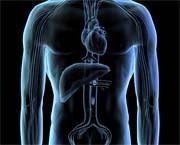 Liver cancer statistics
Liver cancer statistics
Deaths due to liver cancer are rising dramatically. In 2017 there were 5,700 deaths from Liver cancer in the UK; this is up from 3,200 in 2007, a 67% increase. In 2017 there were 5,900 new cases of liver cancer diagnosed. In America it was 31,700 deaths and it is the fifth most common cause of cancer death in men.
Liver cancer is more common in Asian and black people.
Twice as many men develop liver cancer. As women 90% of liver cancers are deemed preventable and due to alcohol, hepatitis B or C, or obesity, with 90% of deaths are in the under 65 age group.
The Liver - what does it do?
The liver is the largest organ in the body (although some people argue that's the skin!) and is located above your stomach and under your diaphragm. It is the size of a football. Its primary role is that of detoxification, although it also helps formulate certain proteins and vitamins, and deals with fats and carbohydrates. It makes more compounds than any other organ in the body apart from your microbiome. It is essential to your good health. The liver's role in detoxification is enormous as it constantly filters the blood removing chemicals, toxins, alcohol, dead cells, bacteria, waste products and much more
If the liver's function is impaired, the whole immune system is weakened.
The liver processes most of the nutrients from your food and regulates how much protein, fat and glucose/sugar circulate in your blood stream. In particular it regulates the fuel passing to your cells.
Waste materials generally pass from the liver via bile ducts into the intestine from where they are eliminated from the body. Unfortunately in a fatty liver, gallstones are common and these block the bile ducts.
Go to: The best diet for a fatty liver
Liver cancer and liver regeneration
The liver is an amazingly resilient organ. It can still function even when only a small portion is still working. It can repair itself, sometimes in less than three months especial in the young. It can re-grow. In instances where a liver has had two thirds removed, the remaining portion has been known to grow back again to full size in less than 12 weeks! However, this is not always the case.
A vital mineral to the liver is magnesium; unfortunately research confirms 40 per cent of Britons and Americans are deficient in this mineral. Certain B vitamins, for example choline and inositol (both found in soya lecithin), will also help the health of the liver as will herbs such as milk thistle, dandelion and black radish.
Boldo tea will help strengthen the elimination of bile and thus toxins. As will coffee enemas (see Gerson Therapy), which help dilate the bile ducts, allowing more waste to pass out. (NB. Drinking the coffee does not have this benefit).
Vitamin K2 has been shown to be extremely important in the health of the liver. Research from Washington and Tokyo has shown that vitamin K2 can restrict liver cancer. Vitamin K is produced in the intestine from the action of beneficial bacteria on greens. It cannot be released without the presence of beneficial bacteria. Researchers studying the effects of vitamin K2 used supplementation of at least 5 times the RDA. Six out of 30 subjects saw their liver cancer stop.
We have had several patients with primary liver cancer, use a juice diet and correct their cancer. Susan Ollifent is perhaps the most famous in the UK. With liver and pancreatic cancer, she went on to a Rainbow Diet using just non-starchy colourful vegetables and their juices, plus Apricot Kernels. 8 weeks later her tumours were just scar tissue. While we do not advocate this as a treatment for everybody in any way, we can understand why it worked for her and how the regenerative powers of the liver came in to play.
Cleaning up the liver
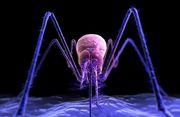 Two British Doctors, Professor Roy Taylor and Professor Mike Lean have shown that you can reverse type 2 diabetes by using a non-starchy vegetable juice diet. It works. It cuts blood fats and cleans up the liver. The blood fats then no longer wrap themselves round the pancreas, allowing it to produce insulin once more.
Two British Doctors, Professor Roy Taylor and Professor Mike Lean have shown that you can reverse type 2 diabetes by using a non-starchy vegetable juice diet. It works. It cuts blood fats and cleans up the liver. The blood fats then no longer wrap themselves round the pancreas, allowing it to produce insulin once more.
So non-starchy vegetable juice diets have been shown in two clinical trials to reduce a fatty liver.
Other toxins can block a liver. A fatty liver may result in fat wrapping itself round dead bacteria, dead parasites and yeasts. This is how gallstones develop. Gallstones are usually only the size of a grain of sand but it is not uncommon for someone to have 3000 to 5000 of such grains, blocking the bile ducts and the healthy and full elimination of toxins.
In the USA there's a view that 90% of people with cancer have a fatty liver. It seems rather high - we think it's around 40%. But certainly a fatty liver can be one way of having high blood fats like cholesterol and triglycerides. Others include heredity, poor gut bacteria (failing to make short chain esters which block cholesterol formation, or simply poor diet.
 And you do not want high blood fats - high blood fats help cancer spread. First, there was research from the USA that cancer spreads in fat 'balloons' hiding from the immune system. Then research from Belgium showed that cancer cells load up on lipids through a switch, TGF-beta2, and these lipids help cancer cells become more aggressive and metastasise. So even if you are eating well and high blood fats don't run in the family, you must keep a clean liver to reduce the risk of cancer causing spread! Unfortunately, the liver cancer chemotherapy drugs can and do make matters worse, largely through increase inflammation and toxins in the liver.
And you do not want high blood fats - high blood fats help cancer spread. First, there was research from the USA that cancer spreads in fat 'balloons' hiding from the immune system. Then research from Belgium showed that cancer cells load up on lipids through a switch, TGF-beta2, and these lipids help cancer cells become more aggressive and metastasise. So even if you are eating well and high blood fats don't run in the family, you must keep a clean liver to reduce the risk of cancer causing spread! Unfortunately, the liver cancer chemotherapy drugs can and do make matters worse, largely through increase inflammation and toxins in the liver.
As we report above, you can attempt to keep your liver as clean as possible with a juice fast, a good dose of Epsom Salts, or coffee enemas.
Go to: A liver flush, using Epsom salts, olive oil and a fruit juice. It was actually created by William Kelley, and popularised by Hulda Clark. Epsom Salts a spoonful mixed in warm water before going to bed at night was an old-fashioned remedy for constipation. It dilates the bile ducts and aids excretion. And it is magnesium based. We have a lot of information on cleansing the blood, lymph and liver and restoring the immune system in our best selling book:
Go to: Everything you need to Know to help you beat Cancer
The causes of primary Liver cancer
1. Alcohol - alcohol causes cirrhosis of the liver and can lead to liver cancer.
2. Smoking - Cancer Research UK states that 20% of liver cancers are the direct result of smoking.
3. Infection
* Hepatitis B, Hepatitis C - Infection with either results in an increased risk of liver cancer and these may well be the primary causes of the disease, and result in cirrhosis.. However, if you also smoke the risk is further increased.
* Aflatoxin exposure - mould on grains in silos is the chief culprit.
* Liver fluke - still common in Africa and Asia can also cause primary liver cancer.
* E coli infection - has been linked to Bile duct cancer; it is common in UTIs.
4. A poor microbiome - with weakened commensal bacteria and higher levels of pathogens, viruses, parasites or yeasts - is linked to a greater risk of liver cancer. A research study funded by the NCI has shown that gut bacteria can suppress or encourage liver tumours by their effects on different bile acids. A strain of Clostridium seemed the dominant force by controlling anti-tumour immune activity by producing certain bile acids.
Lost strains of good bacteria plus the emergence of 'bad' bacteria is common in cancer. The 'bad' produce micro-RNA which can even modify the micro-RNA from your own cells. Also, 85% of your immune memory and our immune system is produced in response to the volume and diversity of your gut bacteria. Lowered dietary fibre, especially inulin, has been linked to liver cancer. Inulin is liked by members of the Bifidobacterium family. Generally speaking, your good bacteria love soluble fibre - oats, vegetables, pulses, nuts and seeds. And people who eat more of these foods have more good bacteria and stronger immune systems. Liver cancer has been linked to poor diet and low consumption of whole foods.
Go to: All cancer begins in the gut
5. Poor Oral health - in a study from Queen's University Belfast, poor oral health was linked to a 75% increased risk of liver cancer. Oral bacteria are known to pass to the gut. Some have also been linked to pancreatic cancer.
6. Obesity and being overweight - both can contribute to Non-Alcoholic Fatty Liver Disease (NAFLD) and from there, cancer
7. Poor diet - especial a lack of whole foods; and/or a high consumption of saturated fat.
8. Poor sugar control, diabetes - people with diabetes especially if they consume too much alcohol have a much higher risk.
9. Weakened immune system -
* Diseases such as AIDS, which hit the immune system, are linked with a higher risk of liver cancer.
* Low vitamin D - Approximately 80% of patients on diagnosis have low vitamin D levels in their blood. People who have cancer and maintain low levels have poorer survival times. But people who supplement and/or go in the sun survive significantly longer. Vitamin D activates the immune system - T-cells are made to attack your specific cancer cells, but they cannot until they each pick up a vitamin D molecule. Boston Medical School, who have 25 years research on vitamin D believe that your plasma levels should be above 70 ng/ml. And that all people with cancer should supplement with at least 5,000 IUs (or 3 hours in the sunshine). Unfortunately cancer drugs damage vitamin D levels and it would be wise to take 10,000 IUs whilst on drugs.
10. Chemicals are increasingly thought to be involved
* Chemotherapy - The Gastro-Intestinal Cancer Symposium in Orlando (Jan 19th 2007) heard how oxaliplatin-based chemotherapy was said to cause liver damage to colorectal cancer patients who already had liver metastases. Damage rose from 11 per cent to 41 per cent in patients where the drug was taken post surgery.
* Polypharmacy - In the New York Presbyterian Hospital, A&E regularly has 28% of its patients who are sick because they are older, and on 12 or more drugs. Liver damage is increasing and common.
* Environmental toxins - Liver damage may well be a problem of our modern world and new factors such as some chemicals and pesticides.
- For example, GM Maize has been linked to liver toxicity in studies on rats (Archives of Environmental Contamination and Toxicology; Jan 2007); and a similar study in Russia showed liver damage in rats fed GM potatoes (The Independent, Feb 17; 2007). Who knows for sure?
- For example, vinyl chloride and thorium dioxide can increase angiosarcoma liver cancer risk.
- For example, Mathew Cave, a professor at the University of Louisville, found 111 chemical that could increase liver cancer risk with mercury, lead and organochlorine pesticides top of the list.
"Do you want the latest news, the latest research on this cancer - click here"
Two forms of liver cancer:
Primary Liver Cancer -
Where the liver is the origin, the source of the cancer. It may be found in the cells of the liver (hepatoma) or it may start in the bile ducts (cholangiocarcinoma).
There are four types of primary liver cancer
-
Hepatocellular carcinoma: most common form, which begins in the liver cells
-
Cholangiocarcinoma: begins in the small bile ducts - about 20% of liver cancers are actually Bile Duct cancers
-
Hepatoblastoma: most common in Children under four with a high success/cure rate
-
Angiosarcoma: begins in blood vessels
Secondary Liver Cancer
While primary liver cancer is far from common in the UK, unfortunately secondary liver cancer os very common. A number of cancers, for example breast, colon, ovarian, womb, prostate and others can spread to the liver. The important point to understand is that you actually do NOT have liver cancer. You have breast or prostate or colon cancer in your liver. You will be given chemotherapy that corresponds to metastases from the original cancer; you may also be given immunotherapy.
Some of the treatments below (for example, Nanoknife or ablation) are still applicable. But the original cancer has spread, you will be stage 3 or stage 4 and whole body treatments and palliative cancer will be discussed with you.
You will still find useful tips by reading this article though.
Liver cancer symptoms
Primary liver cancer is associated with lethargy, weight loss, nausea, a swollen liver, a pain in the abdomen and even the right shoulder (due to the liver pushing against certain nerves).
Jaundice (the skin and eyes taking a yellow hue) may be observed if bile ducts become blocked, and the skin may become very itchy. Sometimes people shiver when it is not cold, develop a temperature and their urine becomes dark.
Sometimes fluids build up in the abdomen (this is called Ascites) due to poorer fluid control by the liver, blockages in the lymphatic system or simply the presence of irritating cancer cells. The fluid can be drained off through a tune inserted in the abdomen wall.
Problems with Liver Cancer can include Liver Failure, spread to the lungs or bones, and kidney failure.
Liver cancer screening
If you are in an at risk category (for example, having been affected by Hepatitis B) you can be screened although there is little evidence that this is preventative at all. Screening involves one or more of CT or MRI scans, Ultrasound and/or Blood tests for a protein called AFP and even biopsies.
Liver cancer diagnosis
Your doctor will be able to feel for a distended liver, and he will send you for tests called scans.
-
Ultrasound - where a gel is used on your tummy, then a (why is it always so cold?) metal rod is simply passed over the top. Harmless sound waves then bounce off internal organs and, via a computer, images show on a nearby TV screen. Ultrasound may also be used in the process of taking a small amount of tissue using a long needle this is called a biopsy.
-
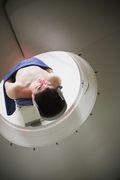 CT scan
CT scan where a number of X-rays are taken to build up a 3D computer picture of whole areas of the body. It will take as long as it takes to complete up to 30 X-rays ie about 30 minutes. You may be given an injection of a substance which allows the X-rays to be clearer; and your doctor should discuss allergies, asthma and iodine concerns with you before hand. CT scans may also be used when conducting biopsies. (NB: Too many CT scans should be avoided where possible. Research from Columbia University (icon Vol 3 Issue 4) calculated that the radiation produced from an annual CT scan risks a 1 in 50 chance of death. The risks of a full body scan are reasonably well quantified says Dr David Brenner)
-
MRI scan - similar to a CT scan, this uses magnetism rather than X-rays. You may be given an injection of a dye to allow more clarity in the images. You will be asked to lie still after sliding into a horizontal chamber. Some people find this very claustrophobic, especially as the tests can last for anything up to an hour. No metal objects (necklaces, pacemakers, metal plates from former operations) are allowed.
If the doctor wants to look at whether the cancer might have spread from your liver to adjacent organs he may perform a laparoscopy where, under anaesthetic (you, not him), he will make a small cut in your abdomen and insert a tube on which is a camera connected to a TV screen. At the same time he may take samples of tissue called a biopsy, using a long needle. However, there have been several articles in medical publications covering concerns that such biopsies may actually spread the cancer. You should ask.
If the doctor fears that the cancer is affecting blood vessels around the liver he may chose to give you an Angiogram, where a dye is injected into your blood stream via a tube inserted, after local anaesthetic, into your groin. X- rays or an MRI scan are done about 20-30 minutes later and show the livers blood vessels in detail.
Liver cancer Stage and Grade
Stage measures the spread of the cancer; Grade measures the aggressivity. Grade is rarely used with liver cancer as all such cancers are usually aggressive.
- Stage 1 means the cancer is confined, often no bigger than 2 cms.
- Stage 2 means there is more than one tumour, and it may be affecting blood vessels.
- Stage 3 means that it has spread; to blood vessels or nearby organs. It may have spread to lymph nodes nearby.
- Stage 4 means it has spread to distant organs most usually the brain.
Orthodox and Alternative Liver Cancer Treatments
There are several options:
Surgery, or surgical resection - where the diseased parts are cut out. Obviously, this is only appropriate if the cancer is confined to the liver, ideally as a single tumour. The reduced-size liver can hopefully regrow back to normal size.
Liver Transplant - this can be an option for patients with liver cancer. Approximately 1000 liver transplants are performed annually in the USA each year.
Ablation - Some hospitals use Radiofrequency ablation (RFA) or cryoablation to kill tumours. A pin like probe is inserted through the skin and this either uses a heating device (thermal ablation) or a freesing liquid (cryoablation.
An alternative form of Ablation is High Intensity Focussed Ultrasound, or HIFU, This can be used on liver cancers, kidney cancers, prostate cancer and others. It is a form of localised hyperthermia. It can only really be used where the tumour is confined to the liver in a solid tumour state. Ultrasound has the advantage that it can be repeated if necessary, and involves far less patient stress - it is quicker than surgery and less invasive. Ultrasound may be used at frequencies which cause the simultaneous heating of the cancer cells and this results in cancer cell death.
Ethanol ablation - this is where the tumour is injected with alcohol.
The Nanoknife IRE; A treatment for inoperable tumours this involves inserting two long needles , one either side of the tumour and passing a high voltage current across them. This punches nano holes in the cancer cell walls and the tumours lyse (leak). Already proving very effective.
Go To: The Nanoknife and liver tumours
Rdiation: Radiotherapy is rarely used there is far too much likelihood of the beam hitting, and hurting, other organs.
Chemotherapy for Liver Cancer:
Chemotherapy is used in a number of ways.
Chemoembolisation (TACE) - This is where it is used directly in an artery to the liver, to get more of the drug to the cancer and restrict side effects. Alternatively it may be used generally, especially if there is further spread out from the liver. Drugs such as Doxorubicin and Cisplatin are commonly used. Chemotherapy is not a cure, and has not proven terribly effective.
Targeted drugs - One new drug, sorafenib, or Nexavar, a monoclonal antibody, is targeted to stop the formation of blood vessels. A similar drug is Levatinib (Lenvima). Then there's Regorafenib for advanced liver cancer - it is often used with sorafenib.
For information on your Cancer Drugs and chemotherapy click here.
Immunotherapy for liver cancer
* Immune checkpoint inhibitors (PD-1) such as Pembrolizumab (Keytruda) and Nivolumab (Opdivo) block PD-1 and allow the immune system to see the cancer cells. The drugs are given intravenously.
* PD-L1 drugs are a different kind of immunotherapy - research shows that they can play a role in Liver cancer
Off-label drugs for Liver cancer
A hot topic at the moment, certainly in the UK, where oncologists are using drugs such as the diabetes drug metformin and atorvastatin to cut sugar and cut fat levels to starve and inhibit the cancer. At CANCERactive we prefer the natural compounds Berberine and Lycopene. These can be used as part of a Complementary Integrative Programme alongside your oncologist's orthodox treatments.
There are several off-label drugs worth looking into.
Go to: How to build an off-label drug protocol for liver cancer.
"Why not ask Chris Woollams to help you build your Personal Program through this minefield. He can help you understand exactly what your options are"
Go to: Personal Prescriptions with Chris Woollams
Building a programme to fight liver cancer
As we have stressed in this article, most usually a liver cancer is associated with a toxic body, one where there is cancer elsewhere. Then it is a secondary liver cancer.
A primary liver cancer is a cancer originating in the liver. There are many steps you can use to take some control of your Complementary and Integrative Treatment plan. For example:
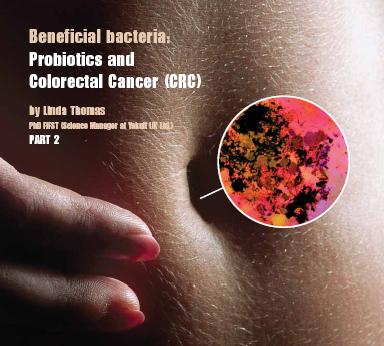
- Kill off possible pathogens (oral, E. coli etc), parasites and yeast infections
- Clean your liver, use green vegetable juices, flush out gallstone blockages.
- Ensure adequate supplies of minerals (especially magnesium) and vitamins (especially K).
- Strengthen the liver with the herbs like milk thistle and dandelion mentioned above.
- Ensure adequate daily intake of beneficial bacteria,
- Keep your blood fats - cholesterol and triglycerides - low.
- Avoid chemicals, pesticides, synthetic hormones, painkillers, alcohol, coffee and smoking.
- Take 5,000 IUs vitamin D3, 1,000 mg fish oils and 1-2 gm of Turmeric (with olive oil and black pepper).
- Eat a nourishing diet (see a diet for chemotherapy or read our book on anti-cancer diets, the Rainbow Diet.
- Look at all your options for treatment. From ablation to immunotherapy and off-label drugs.
Understanding your doctor
Although we always try to write in easy-to-understand words, you may find that some web sites, information leaflets, Doctors and Nurses use words that are not as easy to understand. For that reason we have compiled a list of all the technical words they commonly use called DOCTORSPEAK, the list turns it all into simple, easy to understand English. You can find this list of words by clicking here.
Complementary Liver cancer therapies; Alternative Liver cancer therapies?
CANCERactive is Europe's Number 1 Integrative Cancer Charity. This website alone has more than 4,000 pages of information on it, either as articles or as news stories. More than 10,000 people visit our websites every day. We know from the feed-back we receive just how much we are valued by people trying to beat cancer.
We believe you can increase your personal odds of cancer survival by taking simple health-enhancing steps and adding both complementary cancer therapies and alternative cancer therapies into your mix of treatments.
For example, Hyperbaric Oxygen, curcumin, calorie restriction, melatonin, probiotics and whole body hyperthermia have all been shown in research to make chemotherapy work better. It kills more cells! The research is covered on this website. Surely it makes a lot of sense to use them in your personal cancer treatment programme?
We have a complete review of Immunotherapy telling you the accurate figures and what to watch out for. We tell you what is working and when two new drugs have been used, rather than one. It’s a new, emerging and alternative cancer therapy, but not fully there yet!
Go to: A complete review of Immunotherapy
Then we have an article on how to improve the success of your radiotherapy (and reduce the potential side-effects) – all by adding complementary therapies. Our Guidelines on Diet and Exercise can be found through this link:
Go to: CANCERactive Guidelines on Diet and exercise
Our recommended anti-cancer diet is the colourful Mediterranean Diet (with its focus on the French paradox):
Go to: The Rainbow Diet
Like Hippocrates, we believe all cancer begins in the gut and that gut problems, yeast, viral and parasite infections are common constituents of cancer.
Go to: All cancer begins in the gut
But if you just want to look at the most comprehensive list of Complementary Therapies you can find it here:
Go to: CANCERactive Complementary and Integrative cancer therapies
And if you want alternative cancer therapies start here:
Go to: CANCERactive Alternative cancer therapies
Finally, if you want all this put together for you in one simple plan, why not look into having a Personal Prescription?
Go to: Personal Prescriptions with Chris Woollams
We don’t take one penny from any Pharmaceutical company, cancer clinic or supplements company. We have no vested interest. We just want to see you beat cancer.
"If you are already thinking of supplementing with any of the above products, why not take a look at Our Natural Selection by clicking here."
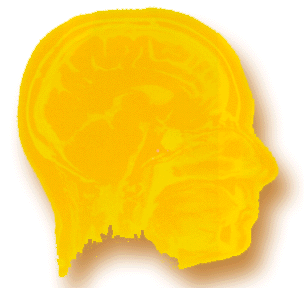
If you feel an independent voice is essential in cancer, please, please help by making a donation. Every little helps.

The CANCERactive Difference: Intelligent Information. Independent Voice.
IMPORTANT INFORMATION
|
* Cancer (and its related illnesses) are very serious and very individual diseases. Readers must always consult directly with experts and specialists in the appropriate medical field before taking, or refraining from taking, any specific action.
This web site is intended to provide research-based information on cancer and its possible causes and therapies, so that you can make more informed decisions in consultation with those experts. Although our information comes from expert sources, and is most usually provided by Professors, scientists and Doctors, our easy-to-understand, jargon-free approach necessitates that journalists, not doctors, write the copy. For this reason, whilst the authors, management and staff of CANCERactive, icon, and Health Issues have made every effort to ensure its accuracy, we assume no responsibility for any error, any omission or any consequences of an error or omission. Readers must consult directly with their personal specialists and advisors, and we cannot be held responsible for any action, or inaction, taken by readers as a result of information contained on this web site, or in any of our publications. Any action taken or refrained from by a reader is taken entirely at the readers own instigation and, thus, own risk.
|